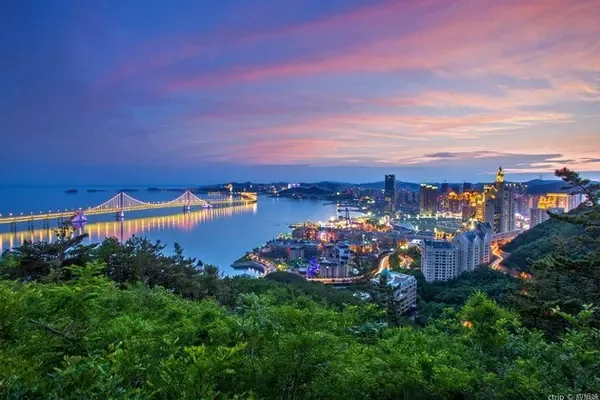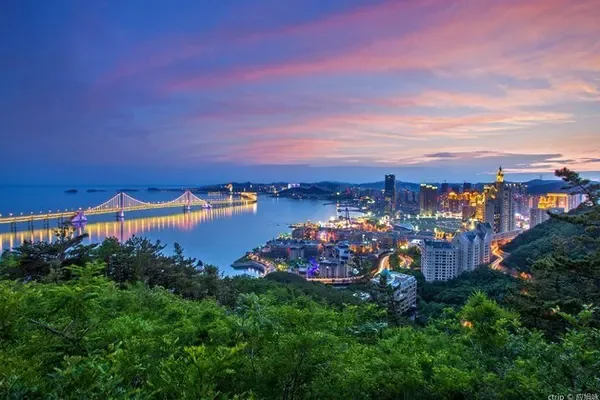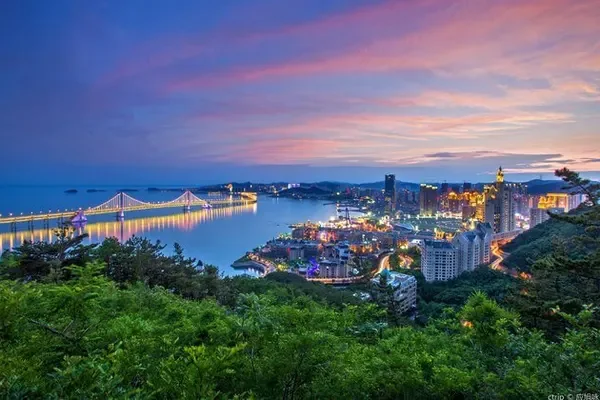Primer
"Cough! Cough!"
"What should I do? Brother Hua is still catching a cold."
"It's been two days, and it's still not good."
"What good thing did you do in Chengdu at night! You don't pay attention to your body!"
"It's because the bath water is too cold where we live." Brother Hua explained, "Ahem!"
"It's been said on the Internet that when you go to Tibet, you are most afraid of catching a cold!"
"Die, the altitude here is 4000, which is higher than Lhasa."
"Colds can cause pneumonia, emphysema, and can be fatal in high altitude environments!"
"That's right, I heard that whenever Tibetan doctors encounter a cold patient, they send it directly to the morgue, and they don't treat it anyway."
"You bastard (Jiujiang dialect, meaning guy) killed people!"
"How about... we throw him out of the car now?"
"Damn!" Brother Hua was obviously angry, "Isn't it just a cold, what's the big deal, what are you afraid of, I'm still coming to Tibet if I'm afraid of death?!"
I still admire Brother Hua. He is almost 60 years old, and he has a lot of illnesses. It looks like he has been hollowed out by the rescue work. Such a person dares to go to the plateau. What are we afraid of with our small bodies?
1. U-turn
The original plan was to go to Seda County according to the following route after seeing the watchtowers in Danba County.
original plan route
Now, because the road is damaged by the flood, we can only go by another route. This means that we have to take the old road yesterday afternoon to Bamei Town, then pass through Daofu County and Luhuo County, and then go to the next destination via National Highway 317, which will take about 370 kilometers.
Today's new route
Because we were afraid of another abnormal road, we got up at six o'clock in the morning, drank a bowl of good yak offal soup, and hurried on the road. It is raining lightly.
The way back is still yesterday's Danba line. Yesterday it was a dive, and today it is a boom.
The mudslides on the road became bigger, there were more falling rocks, and the stream beside the road became more turbulent.
It was only raining lightly, and some people in the same team were already nervous, for fear that the road would be broken.
Fortunately, the traffic is smooth.
Personally, I am not too worried about this kind of thing. It is difficult to travel happily without a calm mind. But I am also thinking, if it is heavy rain or rainstorm, what is the probability that I will drive across this road without accident?
One of the road sections has a beautiful torrent waterfall. Because it is too steep, the road within tens of meters turns into two consecutive 180-degree turns here. Yesterday we passed by and stopped to take pictures. The road surface was clean. Today, when we passed by again, we saw a descending heavy cargo hit the cliff at the corner, and the cab was squeezed flat. The driver must have been reimbursed. Generally speaking , this kind of big cargo has two drivers. The damaged front of the car was covered with a plastic sheet, and a large cargo was parked behind the accident car, probably a companion. There is no rescue vehicle. Driving a truck in Tibet is really a life-threatening job.
Danba line
Think of the Danba County built under the cliff. Not only the county town, but many villages along the road are like this. If there is a big mudslide, it may be gone. In Tibetan areas and western Sichuan, you can understand why a strong earthquake can completely wipe out a county.
Recalling the scene I saw yesterday, on the yellow line in the middle of the road, a falling stone the size of a square stool was lying there safely. An old man stood aside, with his hands behind his back, staring blankly at the stone. This stone should have been rolled down from the cliff beside the road.
You could walk out of the house today and never come back.
What kind of dangerous living conditions is this? When I first entered the Tibetan area, Xinduqiao and other places felt that this was a very good place. The streams, grasslands, cattle and sheep, and hills, except for the high altitude, were all very good.
It changed after two hours of driving, but the scenery is still beautiful. This section of the road is called Bonsai Avenue. You can imagine how steep the mountains are, how lush the trees are, and how winding the water is.
What's even more impressive is that the brand-new asphalt road has just been repaired, cutting a series of jaw-dropping rolling stone areas, and circling gracefully around the steep cliffs. Artificial traces, no one, no house. How was this road built? The power of human beings is so powerful, but the mudslides and falling rocks that appear from time to time remind the drivers, how long will it take for this beautiful road to be cut off by nature? a month? a week? Or is it today?
Arrive at Bamei in two hours, transfer to S303, enter the Sichuan-Tibet North Line, and drive to Daofu County. The scenery along the way is fair and there is no danger. In the meantime, pass Songlinkou, the altitude is 3980, and the roller coaster has reached the top again. The temperature outside the car is 3 degrees, cold wind and rain. Overlooking the Panshan Highway, it's not surprising.
Songlinkou
2. Mudslides
Passing through Daofu County at noon, heading to Luhuo County, the surrounding scenery is still very beautiful. This season, the white and crimson Tibetan houses are full of rapeseed flowers, with red, white and yellow contrasting each other.
Tibetan room
Based on current observations, the clothes of the Tibetans are not clean. Looking at their dark red faces and disheveled hair, it seems that they are not diligent in bathing. I stayed in a Tibetan house yesterday, and I went into the bedroom to observe it. It can be said that it was messy enough (I only entered one family, so it is not yet conclusive). However, the appearance of Tibetan houses is very clean, with bright colors and meticulous decoration. It is rare to see old houses. I have never seen any ethnic group whose outer surfaces are so uniformly clean and beautiful. My companion thinks that the air here is clean, but I don't think so. It must be because of the frequent painting.
Why is there such a contrast? This is really a strange nation, I don't know how much I can learn from this trip.
scenery along the way
Moving on, the traffic was blocked due to mudslides after the rain. This is the biggest danger of self-driving in the rainy season. In the event of a serious landslide, it is not surprising to be blocked in one place for several days. The roads in Tibetan areas are limited, and there are no other places to detour.
It's okay this time, after waiting for two hours, it will pass. Keep going, no more traffic jams. This time, it was stuck in a mudslide area.
Within half an hour of waiting, I really felt the pressure. Think about it, your car cannot move forward or backward. On one side of the cliff is a wide and swift river. Even if a heavy truck falls into it, it will disappear without a trace. On the other side, there is a hillside, which you can see for a while. A large or small stone rolled down and landed on the road. Fortunately, it was only light rain, so there should be no large-scale landslides, but sitting in the car and watching the rocks roll down beside you, unable to move because of the traffic jam, is indeed not a pleasant feeling.
mudslide
Difficult road
Half an hour later, the construction vehicle arrived, and the armed police with submachine guns came, and the road was gradually cleared. While waiting, I chatted with the young man from the road maintenance team. He said that four of them had already died. After that, he said lightly that he had to work overtime again tonight. There was no sadness in the boy's tone.
3. Ups and downs
Arrive in Luhuo County, turn to National Highway 317.
G317 is the real northern line of Sichuan-Tibet Highway, but it is only a branch line of National Highway 318, starting from Chengdu, Sichuan, and ending at Nagqu, Tibet.
In Luhuo County, we turned to Chengdu, yes, not Tibet, but the direction home.
At the beginning, the road was very good and new. Everyone was very happy, but then something was wrong. Except for a very small number of off-road vehicles coming from here, there was not a single large vehicle. Sure enough, National Highway 317 was being rebuilt, the middle section was full of mud, and the rear section was completely abandoned. This is the worst road I've seen in 9 years of driving. This kind of road, only Xianggong can drive, and I will touch the chassis when I drive.
After leaving 317, turn to the country road, there are still 64 kilometers to reach the destination. Light rain turned into moderate rain.
National Highway 317
If the road ahead is already very bad, this section can only be described as fragmented. It is a road I have never seen before. There are mountains on one side and water on the other. It is not dangerous, but the road surface is completely broken. I originally planned to bring my own car here, but what is certain is that unless all the passengers are driven down to reduce the weight, it is absolutely impossible to pass.
Even Xianggong, whose driving experience is older than his age, often has nothing to do at this point, and can only hear the chassis collision of the pseudo-off-road CRV from time to time. No wonder Da Xiong, an old donkey friend before leaving Jiujiang, warned me to bring an engineering shovel and boots.
64 kilometers, five and a half hours of driving, the old driver Xianggong was basically tired and stupid.
The roads in Tibet are more magical than legends.
What is certain is that if you want to travel across Tibet, except for large vehicles above pickup trucks, only Wranglers, Mitsubishi off-road vehicles, and Toyota off-road vehicles can survive smoothly, and the chances of ordinary vehicles not being damaged are zero. Of course, it would be better to be able to drive a tracked armored personnel carrier.
Along the way, I have been thinking about a question: There is a popular saying that it is the harsh living conditions in Tibet, because life is so fragile, that makes Tibetans extremely religious.
It seems to make sense. However, the same pious era also appeared a thousand years ago in the Han nationality (think of the Mogao Grottoes) and in medieval Europe. Is it reasonable to explain it with living conditions?
There will be no answer for a while, I don't just come to Tibet to see the scenery.
At 11:30 in the evening, we arrived at our destination in Seda County. After staying up from noon to early morning, I cooked instant noodles. In the case of severe hunger, people's high reaction will be very serious.
It was night, cold and rainy, and I lived at an altitude of 4,000 meters. The sign outside said "Poverty Alleviation Guest House", 70 yuan per person, and the room was about 6 square meters. There were two single beds, a coffee table, and an electric kettle.
Of course there is no internet here.
Shortly after staying there, the power went out.
Today's journey is 370 kilometers, of which about 120 kilometers are bad roads. 16 hours of driving, including 3 hours of traffic jams.
In Seda County, those who know it know it, but there may be more people who don't know it. Where is it? The next time it is announced, it may be very exciting.
end:
"Hurry up and open a can of Red Bull for me!" The anxious Xianggong shook the steering wheel back and forth, and Brother Hua shouted beside him.
"What's the hurry!" Brother Hua's tone was not kind, "I'm lighting you a cigarette!"
"Stop arguing, it's useless to be anxious." I could only try my best to appease, then turned to the commander-in-chief beside me, "Brother Li, why didn't you talk for a long time."
"I'm praying." Brother Li opened his eyes like an old monk in meditation, looking at the roof of the car, "I hope I can become a cloud to reduce the weight of this car."
I looked at Brother Li who was taller than me and at least 20 catties heavier than me with reverent eyes.
"Bang!" There was a loud noise from the chassis of the CRV.
If I arrive early and arrive late every day, there is no Internet everywhere, and the battery is often out of power, I use a notebook to type in a shaking car and use a touchpad to PS photos. Is writing this kind of travel notes an impossible task?
It's like you ask me if I'm afraid today? Let me tell you, I’m really not afraid, how many people can die in Tibet a year? Don't be afraid if you understand probability, just be careful.
Men, there are always challenges.
illustrate:
I have activated a new public account "Feng Xiaohui", and the public account "Jiuzhi Teacher Feng" will be deactivated soon. If you like my text, please search for the official account "Feng Xiaohui" in WeChat, or long press the following QR code to identify it. Thanks!



